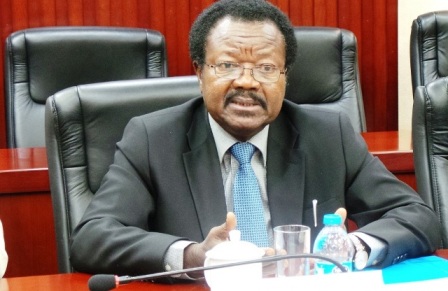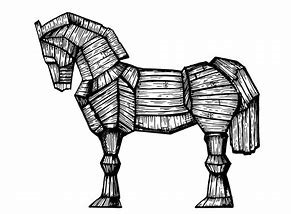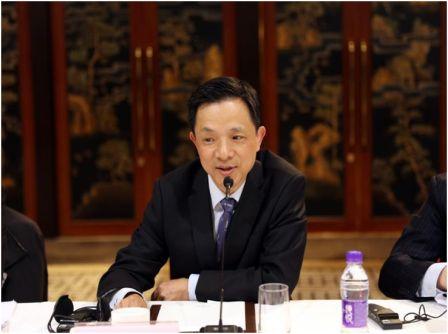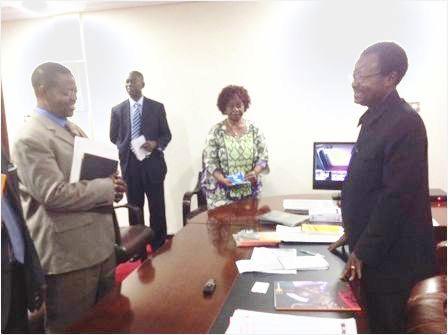Utilizing China’s Development Cooperation model
China remains Africa’s strategic development partner. Through areas of infrastructure, health, science and technology and human resource development, it continues to ensure an upsurge in her influence and partnership with developing nations within the African continent.
As it is with the China-Africa Development Fund (CADFund), the Forum of China-Africa Cooperation (FOCAC) is a major factor in shaping ties between Africa and China. Established in 2000 as a way of forging the Sino-Africa relations, FOCAC keeps playing the role of serving as a mechanism through which the world’s second largest economy (China) could cope with the challenges brought about by economic globalization and promoting common development initiatives.
In a broader framework, both China and Africa have been using this development framework (FOCAC) in expanding the bars of cooperation ties by putting up new measures that could be used to advance bilateral trade and development.
By 2000, for instance, during the first FOCAC Ministerial Conference, China vowed to exempt debts from African countries, totaling 10 billion Yuan. At the second FOCAC meeting in Ethiopia in 2003, China also announced its commitment to help develop Africa’s human resources through increasing its financial contribution to the continent by training up to 10,000 African personnel in different fields.
The need for developing nations to explore all possible avenues in cementing the longstanding relations with China should not be overemphasized. This is against the backdrop, that China has had an influential role in world affairs, including economy (as the world’s second largest economy, after the United States), politics and global affairs, as a permanent member of the UNSC, amongst other reasons.
China is the world’s biggest exporter and second largest importer. With these expanding imports, China’s continued emergence as a major trading partner for Africa is expected to continue growing. This clearly will be of Africa’s interest.
Figures indicate that by 2012, China’s foreign trade was put at $3.87 trillion. By the same year, its export to Africa rose by 5%, which was a faster growth, compared to other regions.
Statistics further prove that 18% of African imports in 2012 came from China, compared to 16.8% in 2011, 10% in 2008 and 4.5% a decade ago. Over the last 30 years, economic cooperation between China and Africa contributed more than 20% to the growth of African countries.
But China’s development framework with rising tigers (developing nations) in contrast to Africa’s traditional donor partners should not be ignored. Based on mutual relations and benefits: ‘win-win’, partnership, ‘shared growth’, country ownership and investment-oriented; trade, special economic zones; and industrialization amongst others, this type of development cooperation as pushed by China appears to be in line with Africa’s urgent needs.
With this model of development cooperation, Sierra Leone has not lagged behind in terms of searching for available opportunities China is offering to developing nations. Worthy of note, also, is that areas of cooperation between the two countries include, but not limited to; trade relations and economic and technical cooperation and exchanges and cooperation in the fields of culture, education and health.
China’s continued support to Sierra Leone is today apparent and tangible, more in line with the country’s drive to prosperity, as contained in her blueprint for national development the ‘Agenda for Prosperity’, with leadership provided by His Excellency President Ernest Bai Koroma. With this support, Sierra Leone today has become a work’s yard.
Chinese supported projects in Sierra Leone include the Regent-Grafton road; the multimillion dollar new airport project on the mainland; Charlotte hydro dam project; and a $1.2 billion land investment project with China Hainan Rubber Group for the development of a 35,000 hectare rubber plantation and the cultivation of rice on a 100,000 hectares farm. A tangible investment in the health sector is the China Friendship Teaching and Referral Hospital.
By 2012, Shandong Steel Company bought a 25% shares in one of the country’s iron ore mines, presently operated by African Minerals.
Talking about special economic zones as been key to China’s development model with developing nations, three Mano River Union Ambassadors in China (Guinea, Liberia and Sierra Leone) have been working closely on the establishment of a Free Zone Project along the Makona River. Achieving maximum socio-economic development in the Makona River area is a major goal.
Major components of the project are: (a) Foya, Koindu and Guekedou Free Zone, including land development, industrial facilities, urban infrastructure facilities and social service facilities; (ii) Sulima Sea Port/Railway, including construction of Sulima Sea Port, railway from Sulima to the Free Zone to allow the three countries to develop their natural resources; and (iii) Free Zone to Siguiri, including construction of railway from Free Zone (Foya, Koindu and Guekedou) to Siguiri.
This project is expected to contribute greatly in addressing the perennial challenge of turning the natural resource advantage within the three countries into development advantage. This will then bring about a multiplier effect in the mining and related infrastructural sectors, promoting manufacturing and urbanization, as well as commercialization in the wider economy within the three countries.
In this development driving force, the need for closer cooperation on a sound Sub-Regional Development like this is paramount. There is the visible passion on the part of the MRU envoys. His Excellency Victor Bockarie Foh keeps demonstrating the strong desire and will to ensure the success of this initiative. For him, the Railway to be built from Sulima in Sierra Leone to Guekedou in Guinea and then extend into Voinjama in Liberia “will form the foundation for a Trans- West African Railroad which could be linked to the Potential African Continental Railway System.”
In 2012, a US$ 20 billion credit facility was extended to African countries by the Chinese Government, now believed to be supporting Regional and Sub-Regional projects. There are great opportunities across the continent for development both at regional and sub regional levels. But it is only when Africans need to utilize the development model of China, that the continent is sure of reaching her development apex.
Stay with Sierra Express Media, for your trusted place in news!
© 2014, https:. All rights reserved.






